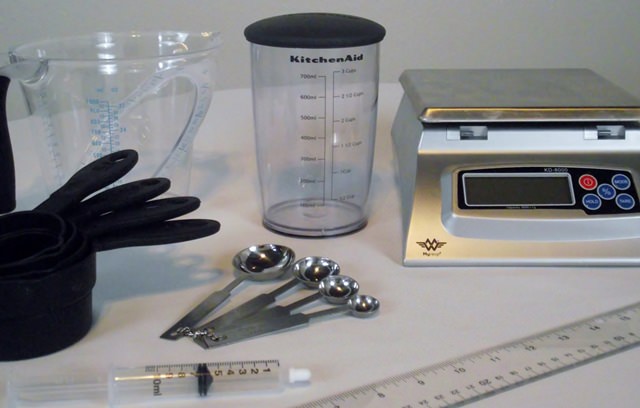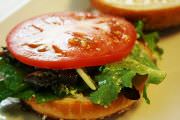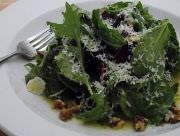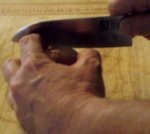Cooking Measurements And Conversions

Measurement is a wonderful tool. It allows us to precisely create, record, and recreate something. The problem with it is that there is no universal standard for a singular measurement system. The metric system is, almost the universal standard, but there are a few hold out countries, the US being one.
Cooking Measurements And The Metric System
In cooking and baking, professional recipes are always by weight, in grams. There are several reasons for this but the most important reason is precision. The smallest whole unit of weight in the US standard system is the ounce. In the metric system the smallest whole unit of weight is the gram. There are 28.3 grams to 1-ounce. With kitchen measurement precision is everything, which do you think is more precise?
Kitchen Measurement Conversion Lists
US Dry Volume
- 1/16 teaspoon = dash
- 1/8 teaspoon = a pinch
- 3 teaspoons = 1 tablespoon
- 1/8 cup = 2 tablespoons
- 1/4 cup = 4 tablespoons
- 1/2 cup = 8 tablespoons
- 3/4 cup = 12 tablespoons
- 1 cup = 16 tablespoons
US Liquid Volume Measurements
- 8 ounces = 1 cup
- 1 pint = 2 cups 16 ounces
- 1 quart = 2 pints 4 cups
- 1 gallon = 4 quarts 16 cups 128 ounces
Us To Metric Volume Conversions
- 1/5 teaspoon = 1 milliliter
- 1 teaspoon = 5 milliliter
- 1 tablespoon = 15 milliliter
- 1 fluid oz. = 30 milliliter
- 1 cup = 237 milliliter
- 2 cups = 470 milliliter
- 4 cups = 946 milliliter
- 4 quarts = 3.8 liters
Metric To Us Volume Conversions
- 1 milliliter = 1/5 teaspoon
- 5 milliliter = 1 teaspoon
- 15 milliliter = 1 tablespoon
- 30 milliliter = 1 fluid oz.
- 100 milliliter = 3.4 fluid oz.
- 237 milliliter = 1 cup
- 1 liter = 34 fluid oz.
- 1 liter = 4.2 cups
- 1 liter = 2.1 pints
- 1 liter = 1.05 quarts
- 1 liter = .26 gallon
Weight
- 1 ounce = 1/16 pound = 28 grams
- 4 ounces = 1/4 pound = 113 grams
- 8 ounces = 1/2 pound = 227 grams
- 16 ounces = 1 pound = 454 grams
- 1 gram = .035 of an ounce
- 5 grams = .17 of an ounce
- 10 grams = .35 of an ounce
- 25 grams = .8 of an ounce
- 50 grams = 1.7 ounces
- 100 grams = 3.5 ounces
- 500 grams = 17.6 ounces = 1.1 pounds
- 1000 grams = 1 kilogram = 35.2 ounces = 2.2 pounds
Pan Size Equivalents
Baking Or Cake Pans
- 8 x 8 x 2 inch = 20 x 20 x 5 centimeter
- 9 x 9 x 2 inch = 23 x 23 x 5 centimeter
- 12 x 8 x 2 inch = 30 x 20 x 5 centimeter
- 13 x 9 x 2 inch = 22 x 33 x 5 centimeter
Loaf Pans
- 8 x 4 x 3 inch = 20 x 10 x 7 centimeter
- 9 x 5 x 3 -inch = 23 x 13 x 7 centimeter
Round Cake Pans
- 8 x 1-1/2 inch = 20 x 4 centimeter
- 9 x 1-1/2 inch = 23 x 4 centimeter
Pie Plates
- 8 x 1-1/2 inch = 20 x 3 centimeter
- 9 x 1-1/2 inch = 22 x 3 centimeter
Tart Pan
- 10 inch = 25 centimeter
Casseroles
- 1 quart = 1 liter
- 1-1/2 quart = 1.5 liter
- 2 quart = 2 liter
How Similar Ingredients Differ In Volume And Weight
One of the problems with cooking measurements is that volume differs greatly based on the ingredient being measured. In other words, a cup of flour is going to vary greatly, by weight, depending on the kind of flour being measured.
All-purpose flour
- US Volume: 1 cup
- US Weight: 5.1 ounces
- Metric Weight: 145 grams
White whole wheat flour
- US Volume: 1 cup
- US Weight: 5.6 ounces
- Metric Weight: 160 grams
As you can see there is a big difference between a cup of all-purpose flour and a cup of whole wheat flour. They vary by a half ounce or 15 grams. In a recipe calling for 10 cups of flour that difference becomes important.
Another problem with recipes that call for cups of "ingredients" is the way different people measure those cups. This is why a recipe that calls for cups of flour, for example, can vary so much from person to person.
Converting cooking measurements in recipes is a matter of being consistent ingredient by ingredient. The accuracy of the conversion required depends on the type of project. Baking typically requires more precise measurements than cooking.
This page can be summed up in one sentence:
The most accurate way to cook is to weigh all of the ingredients in grams.
Tags: cooking measurements, kitchen measurement, kitchen measurement conversion




